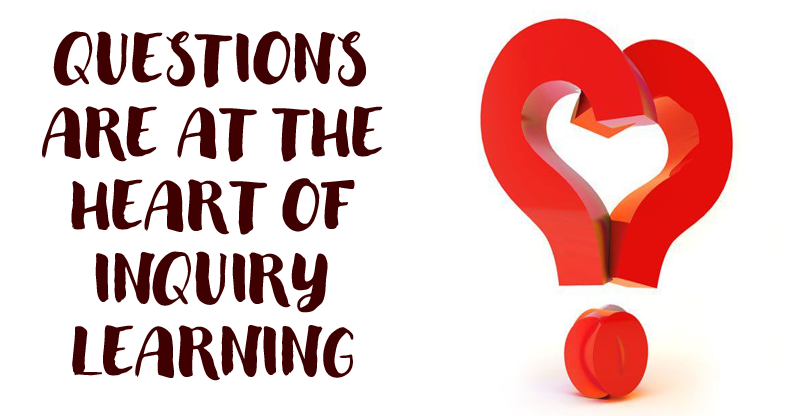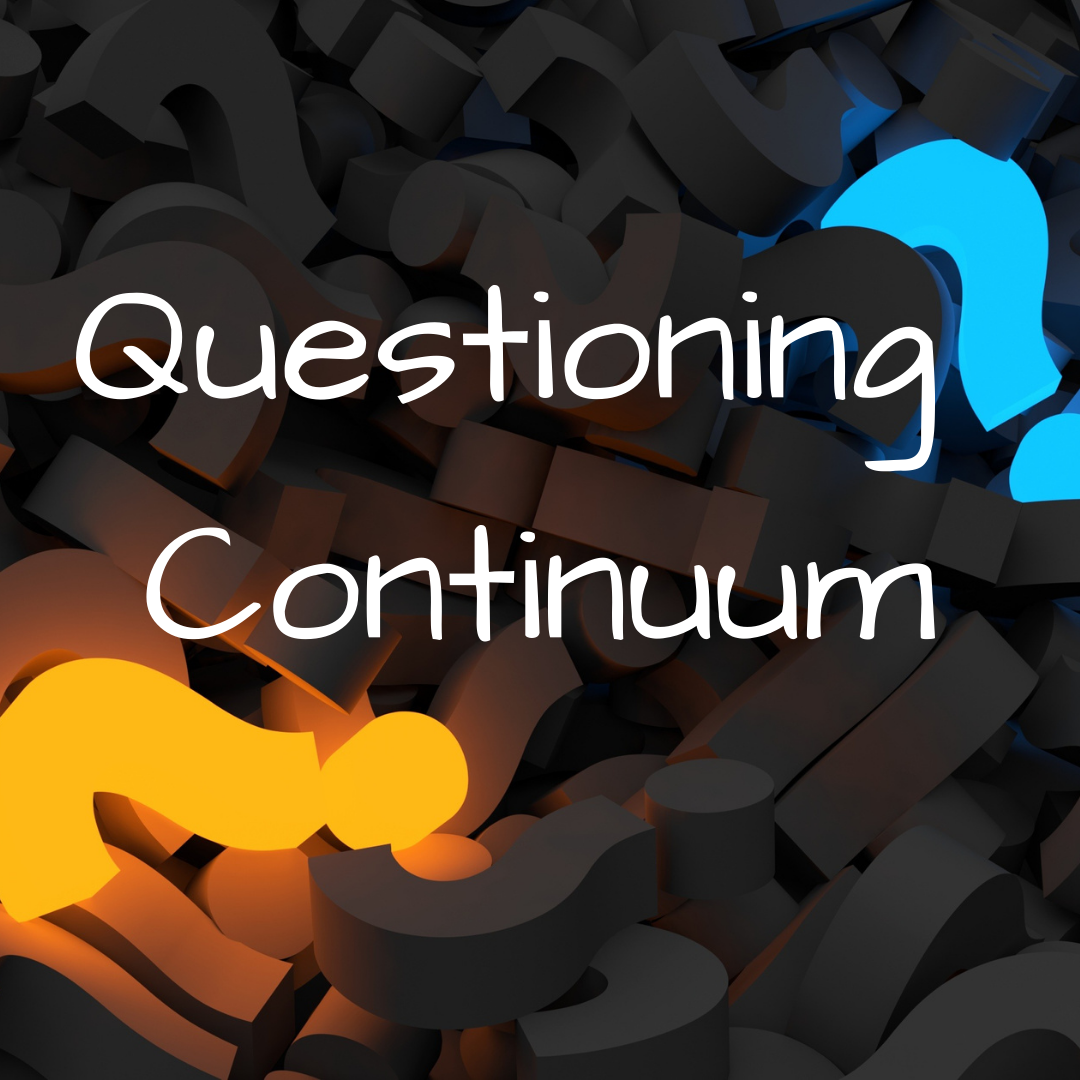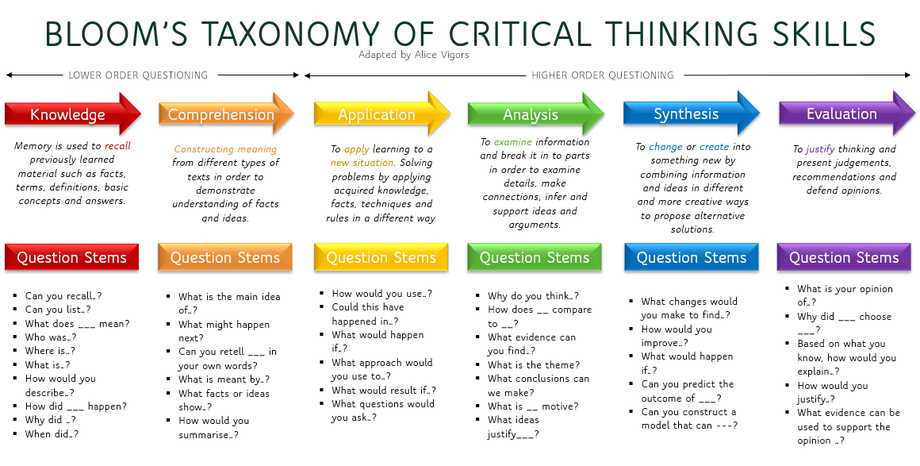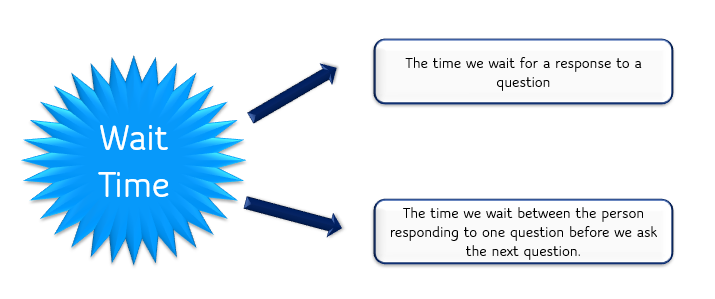|
Research tells us that questioning has a positive impact on student learning and is the signature of outstanding pedagogical practice.
This is why questioning lies at the heart of inquiry. Inquiry teachers want their students to be questioners – to be curious, risk taking, wondering learners who are thirsty to find out, critique and explore the world. |
When students set about answering a question they begin to construct ideas, apply knowledge, absorb new information, and demonstrate understanding. Open, rich, engaging questions are a consistent feature of inquiry-led classrooms.
A school culture of inquiry relies on students and teachers maintaining a continuous cycle of asking and responding to powerful questions. As educators there are a number of strategies teachers can leverage to help foster a culture of questioning within the learning environment. These include:
A school culture of inquiry relies on students and teachers maintaining a continuous cycle of asking and responding to powerful questions. As educators there are a number of strategies teachers can leverage to help foster a culture of questioning within the learning environment. These include:
- Provoking and MODELLING a curious disposition across the day. If we want to see a culture of questioning develop then we as educators need to be the one leading the way and showing learners what this looks like, sounds like, feels like etc.
- VALUING and working with students questions and building their questioning skills and knowledge. Take the time to truly listen to the questions your learners are asking. Show them that their questions and thoughts matter and are valuable to our learning.
- Using sophisticated, thoughtful QUESTIONING/DIALOGUE TECHNIQUES in the classroom
- PLANNING learning experiences around questions.
|
Research conducted by the likes of David Hopkins and John Hattie, highlight that questioning plays a large part in our classrooms, being the 2nd most utilised teaching strategy behind teacher talk. However, most of the questions that we ask our students are lower-order or lower-cognitive questions that ask students to recall facts or are procedural. This is indicative of a focus on knowledge acquisition.
Utilising higher-order questioning enables students to convert information to knowledge, and move from Knowledge acquisition to knowledge application. It is important to emphasise, as brain studies show, that motivation to learn is not sustained simply by asking questions. It is sustained by identifying, explaining, and using the new knowledge and understanding that results from asking and responding to questions. Bloom’s Taxonomy of Critical Thinking Skills is widely used as the basis for constructing questions – particularly higher order questions. Bloom classifies thinking into 6 categories: |
|
- Knowledge
- Comprehension
- Application
- Analysis
- Synthesis
- Evaluation
The value of waiting . . .
2) The time we wait between the person responding to one question before we ask the next question which ranges from 0.6 of a second up to 2.2 seconds.By making a conscious and concerted effort to extend wait time from 1 second to 3 seconds, research shows there are several positive impacts on student responses, including:
David Hopkins (2015) highlights that student responses to our questions improves when they know they have longer to process questions, organise their thoughts and to look at ideas in different ways.
Wait time sustains curiosity.
- Longer responses
- Decrease in students failing to respond
- Confidence in responding increases
- Number of spontaneous and relevant responses increases
- Increase in the number of speculative responses
- Increase in the number of different approaches to a question
- Students are more likely to respond to the responses of their peers
- The likelihood of inferences based on evidence increases
David Hopkins (2015) highlights that student responses to our questions improves when they know they have longer to process questions, organise their thoughts and to look at ideas in different ways.
Wait time sustains curiosity.
Please note that these pages contain a collection of resources and links to activities to support and enhance classroom teaching and learning. The thumbnails and activities are the property of the authors/creators and available due to their generosity in sharing their work. All sources are acknowledged on the ACKNOWLEDGEMENT OF SOURCES page.
This website contains NSW syllabus content prepared by the NSW Education Standards Authority for and on behalf of the State of New South Wales which is protected by Crown copyright. https://www.educationstandards.nsw.edu.au/wps/portal/nesa/home
This work is licensed under a Creative Commons Attribution-NonCommercial-ShareAlike 4.0 International License.
This website contains NSW syllabus content prepared by the NSW Education Standards Authority for and on behalf of the State of New South Wales which is protected by Crown copyright. https://www.educationstandards.nsw.edu.au/wps/portal/nesa/home
This work is licensed under a Creative Commons Attribution-NonCommercial-ShareAlike 4.0 International License.




